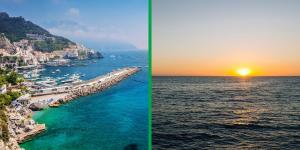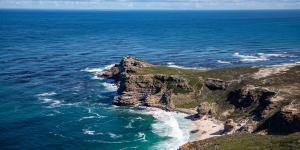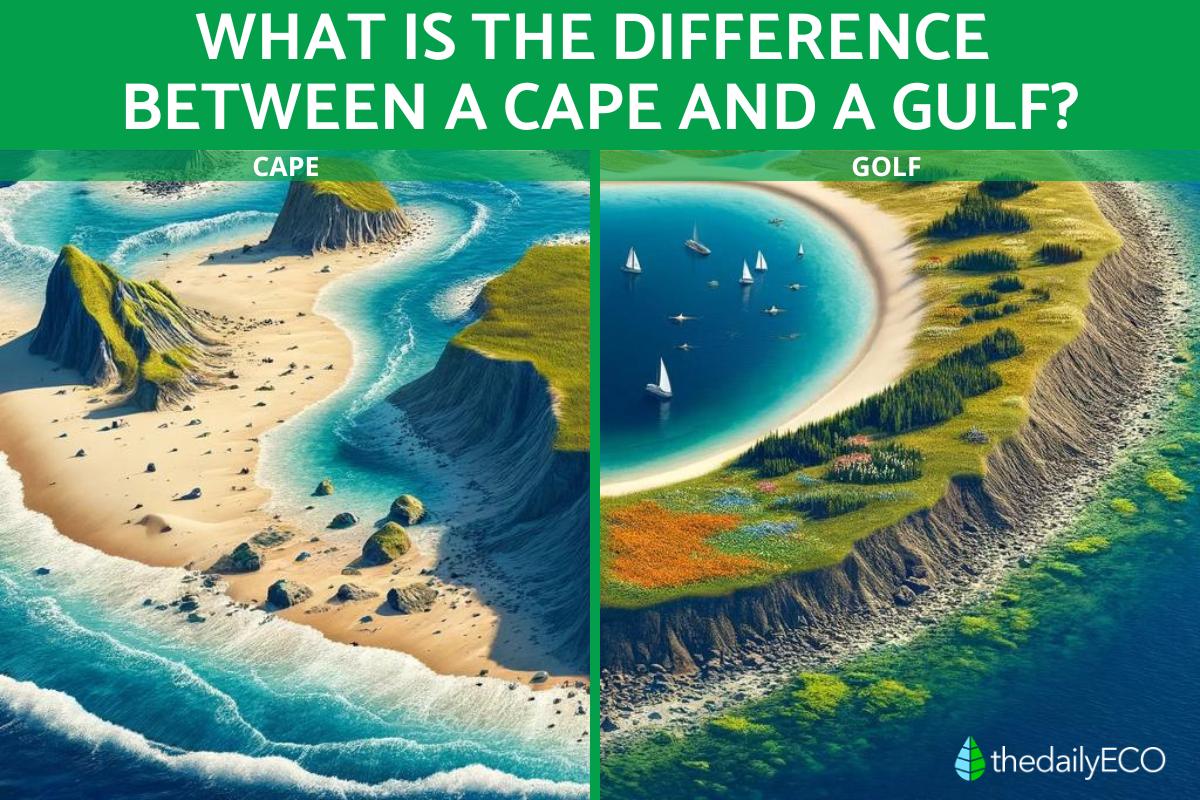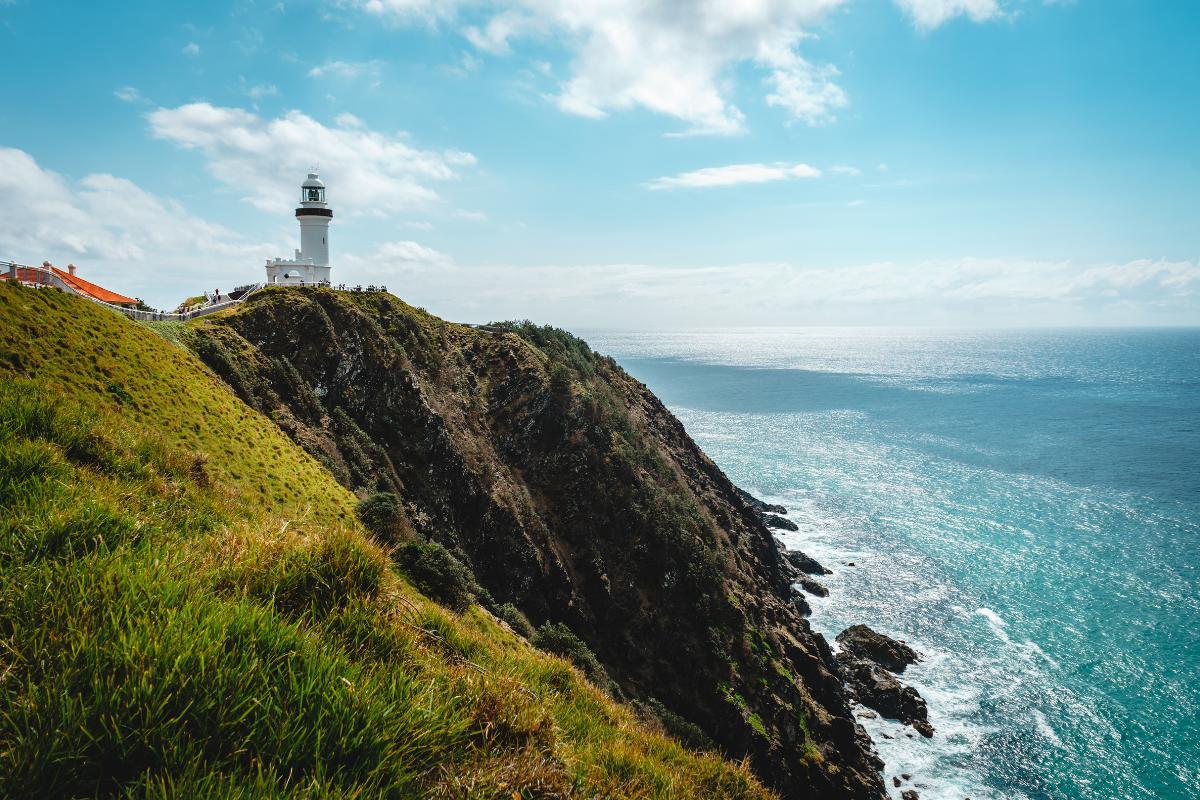What Is the Difference Between a Cape and a Gulf?


Have you ever gazed out at a dramatic coastline and wondered about those landforms jutting into the sea or the deep indentations carving inland? These captivating features, capes and gulfs, represent opposite yet fascinating interactions between land and water.
This article from thedailyECO dives into the key differences between capes and gulfs, exploring their geography, structure, navigational significance, size and shape, and ecological and economic impacts.
What is a cape?
A cape is a prominent extension of land that extends from the coastline into the sea, and its protrusion is typically more pronounced than other parts of the continent. These geological features are often formed by processes such as wind and water erosion, tectonic activities, or the accumulation of sediments.
Capes play a crucial role in navigation by serving as reference points and are ideal locations for lighthouses. They also mark significant geographical points between countries or continents; for example, Cabo da Roca in Portugal is the westernmost point of the Iberian Peninsula.
Capes form through several geological processes. Firstly, erosion by waves, glaciers, and rivers wears away softer rocks while leaving behind harder formations. Secondly, volcanic activity produces protruding landmasses of hardened rock. Finally, sediment accumulation from converging currents gradually builds up landmasses that evolve into capes.
The environmental impact of capes is significant. They can disrupt ocean currents, leading to areas of upwelling where nutrient-rich water surfaces, creating calmer water zones. This upwelling attracts diverse marine life, fostering rich ecosystems, and influences local weather patterns by affecting wind and precipitation. Capes also provide critical habitats for various marine and terrestrial species, and are popular tourist destinations due to their scenic landscapes. Additionally, they can mark the endpoints of peninsulas or the beginnings of bays, as seen with the Cape of Good Hope in South Africa.
Examples of capes include Cape Horn, located at the southern tip of South America, known for its challenging sailing conditions; Cape Cod, extending into the Atlantic Ocean from Massachusetts; Cape of Good Hope in South Africa, a major navigational landmark; and Cape Arkticheskiy, found at the northernmost part of the Eurasian continent in Russia.
Want to learn more about the fascinating geological features known as capes? Check out this other article for a deeper dive.
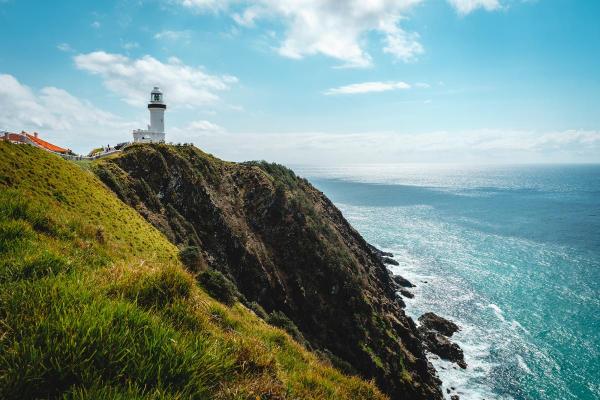
What is a gulf?
A gulf is a large indentation, a deep cut carved by oceans or seas into the land. These features are typically larger and deeper than bays, but their size and depth can vary significantly. For example, the Gulf of Mexico is much larger and deeper than the Gulf of Saint Lawrence.
The entrance of a gulf, unlike a bay, can be wide or narrow. It acts as a passage connecting the gulf to the larger body of water. Unlike bays, which often have wider entrances relative to their depth of penetration, there's no strict size requirement for a gulf's opening. This allows many gulfs to become crucial shipping routes due to their deep waters and the shelter they offer from the open ocean. The Persian Gulf, for instance, is a vital waterway for oil transport.
The formation of gulfs is a result of various geological forces. Plate tectonics play a key role. The movement of Earth's tectonic plates can create rifts or weak zones in the crust. Over time, these cracks fill with water, transforming into gulfs. Erosion also contributes to their formation, similar to cape formation. Glaciers, rivers, or waves can relentlessly carve out large coastal indentations, eventually shaping these landforms. Subsidence, the sinking of landmasses due to geological processes, can also contribute. When land subsides, seawater floods low-lying areas, further shaping the formation of a gulf.
Examples of gulfs include the Persian Gulf, located between Iran and the Arabian Peninsula, known for its oil reserves; the Gulf of Mexico, bordering the southern United States and Mexico; the Gulf of Alaska, indenting the southern coast of Alaska; and the Gulf of Finland, an extension of the Baltic Sea between Finland and Estonia.
Curious about other fascinating coastal features? This article explores bays in detail.

Differences between cape and gulf
As we have seen, while both geographical features play significant roles in shaping coastlines and influencing marine navigation, they are distinct in their formation, structure, and impact on the surrounding environment. Let us take a closer look at their main differences:
Geography
- Gulfs: these are large, deep inlets carved into the coastline by oceans or seas. Their rounded shapes and smooth shores create sheltered waters.
- Capes: in contrast, capes are land protrusions that jut out into the water. Their distinctive shapes influence marine and ocean currents.
Structure
- Capes: typically, capes have a rocky base due to erosion-resistant materials. Their surfaces may vary, including gravel, boulders, and sand.
- Gulfs: offer a wider variety of coastal environments. From fine sand beaches to marshes and estuaries, these are shaped by both oceanic and river (fluvial) processes.
Navigation
- Capes: these crucial navigation points often have lighthouses to guide ships.
- Gulfs: the calm waters within a gulf make them ideal for anchoring ships. Strategically located ports developed around gulfs enhance economic activities by facilitating trade and transportation.
Geological Formation
- Capes: these features can form through various processes such as erosion by wind, waves, or glaciers; tectonic activity like plate movement; or even the accumulation of sediments.
- Gulfs: typically, gulfs result from land subsidence (sinking) or sea-level changes that flood coastal areas.
Size and shape
- Capes: generally smaller and less defined in shape, capes can vary significantly in size and form (think pointed headlands vs. broader peninsulas).
- Gulfs: Larger and more distinctive, gulfs have a rounded shape due to their extensive indentation into the landmass.
Ecological and economic impact
- Capes: by altering ocean currents, capes can influence both local weather patterns and marine life in the surrounding area.
- Gulfs: due to their size and capacity to host ports and manage sea traffic, gulfs significantly impact human activities like fishing, shipping, and tourism.
Wondering about the differences between oceans and seas? This article explores it further.
If you want to read similar articles to What Is the Difference Between a Cape and a Gulf?, we recommend you visit our Ecosystems category.
- Díaz, JM, & Galeano, J. (2016). The biogeophysical environment. Artisanal fishing in the northern Colombian Pacific, 15.

